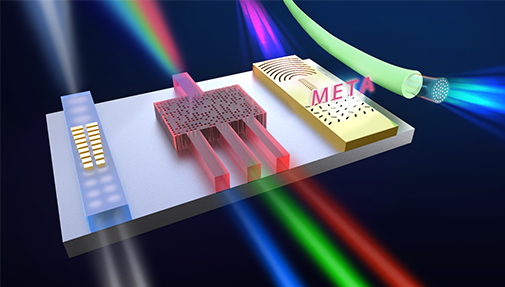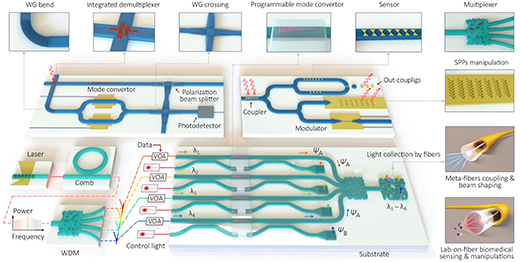| Dec 02, 2021 | |
Meta-waveguides for advanced integrated photonics applications |
|
| (Nanowerk Spotlight) The concepts of metamaterials and metasurfaces have spawned massive novel applications in free-space optics. However, recent research also indicates that they possess prominent potential for tailoring the electromagnetic modes in optical waveguides. | |
| Conventional optical waveguides are generally restrained by the limited library of waveguide structures and their functionalities are primarily only light guiding and confinement. Nevertheless, with the aid of subwavelength meta-structures, optical waveguides can be devised with largely increased degrees of freedom. | |
 |
|
| Versatile meta-waveguides for integrated photonics and beyond. (Image: Yuan Meng, Tsinghua University) | |
| In a recent review paper published in Light: Science & Applications ("Optical meta-waveguides for integrated photonics and beyond"), an international team of researchers has comprehensively reviewed recent progress in meta-waveguides-based devices and applications, including a broad range of photonic devices and systems that synergize functional meta-structures with diverse waveguide platforms (dielectric/plasmonic waveguides and optical fibers). | |
| The review systematically catalogs foundational results and representative applications. It also elaborates on underlying physical models with both forward- and inverse-design tutorials. | |
| The authors highlight “how incorporating the concepts of meta-optics with waveguide technologies can propel photonic integrated circuits into new heights, by providing versatile efficient coupling interfaces, novel on-chip optical signal processing paradigms and diverse platforms for sensing, imaging and artificial intelligence”. | |
| Current hurdles and potential research perspectives for this vibrant field are outlined in detail. | |
 |
|
| Perspectives on future photonic 'meta-circuits'. (Image: Yuan Meng, Tsinghua University) (click on image to enlarge) | |
| As the subwavelength architectures have offered a versatile playground to manipulate the propagation and coupling of electromagnetic waves, waveguide-based devices can be either largely enhanced in device performance, or further expanded towards previous hardly accessible novel functionalities. Various emerging opportunities are still awaiting. | |
| Provided by Department of Precision Instruments, Tsinghua University | |
|
Become a Spotlight guest author! Join our large and growing group of guest contributors. Have you just published a scientific paper or have other exciting developments to share with the nanotechnology community? Here is how to publish on nanowerk.com. |
|
